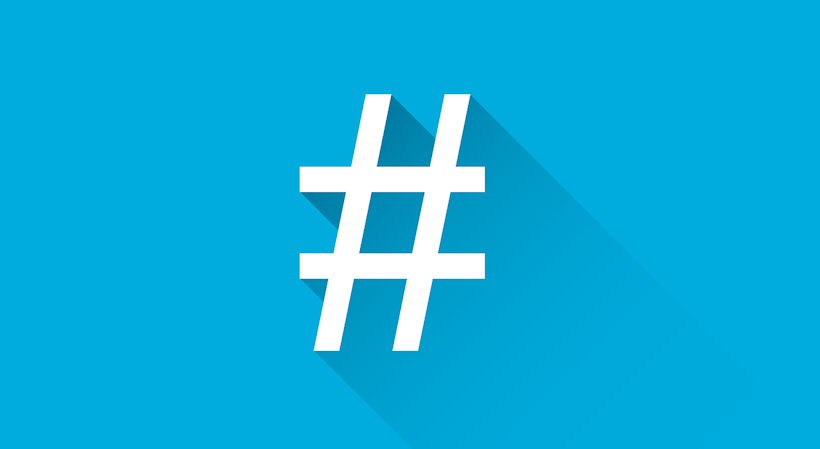It’s been more than a decade since the hashtag made its debut on social media. Chris Messina proposed this tagging method on Twitter in 2007. While Twitter developers initially rejected it, it gained traction after users began employing it extensively to track what was happening with the San Diego forest fires in October of 2007.
Around the same time, the GOP began protesting an energy bill and used #dontgo on Twitter. One could argue this was the first example of a widely used advertising hashtag.
Given that hashtags can be used in advertising and commerce, can they be registered as official trademarks?
Can you trademark a hashtag?
Yes, you can trademark a hashtag, just like any other word or phrase connected to your product or service. However, just as with other trademarks, there are hurdles you need to clear to be granted official registration with the United States Patent and Trademark Office (USPTO), and there are limits to what kind of protection you can expect.
Related: 3 Ways to Engage Your Audience Using Instagram Stories
Getting a trademark
As with any other mark, you have to provide a product or service to the public that is connected to the word or phrase—in this case, a hashtag. The USPTO will look for evidence that you are (or will be) using the hashtag to promote a product or service when deciding if your application will be accepted or denied.
There is a multi-step process to registering a trademark.
First, there is some initial background work involved, such as searching the existing USPTO database to see if the mark is already registered by someone else, identifying which goods and/or services category fits your mark, and defining the basis for filing.
Next, you will prepare and submit the actual application, and pay the necessary processing fees. It will take the USPTO roughly four to six months to review your application. If there are any issues with the registration, you will have six months to respond to those problems.
Once the USPTO is satisfied that there are no issues, your mark will be published in the Official Gazette. This step in the process lasts for roughly three to four months. Other trademark owners have 30 days to state if they feel they will be harmed by your mark being granted an official registration. The rest of the time is spent waiting on the USPTO.
Finally, the last step is having the USPTO issue the Certificate of Registration, which can take an additional two to three months.
In all, it will likely take somewhere around a year to officially register your mark. While this is all in process, you can still utilize your mark in advertising, on your products, etc.
Limitations of trademark protection
Registering your hashtag as a trademark will not prevent other users from including it in their social media postings, nor is it a tool that will provide a way to censor users who use it in a way you do not like. It will, however, provide legal protection in the event that another company uses it to promote a competing product or service within the same industry.
Overall, there are more than 1,700 records with the USPTO for trademarks on hashtags, though many of these are now “dead” marks.
Should your startup pursue a trademark?
Ultimately, you need to make the call whether or not you need to pursue a trademark for your hashtag. Let’s take a look at an example of a media startup run by two mommy bloggers.
Cat & Nat have amassed a large social media following. As of June 2018, they have 225K Instagram followers, and 967K Facebook likes/followers. They also have nearly 50K YouTube subscribers. The majority of their popular YouTube videos are about so called “Mom Truths,” where they talk candidly about being a mother. These posts are all labeled with #MomTruths.
So, in this case, why did they pursue a trademark?
The most pressing reason is to prevent other people from swooping in and producing goods like coffee mugs or sweatshirts with the phrase and hashtag they’ve pushed to popularize, and have already gotten in front of millions of viewers across their social channels.
Without a trademark registration for this hashtag, anyone would be able to start selling these products, mooching off of years of their hard work to turn a quick profit.
How social media networks handle trademark violations
If someone is using your mark to promote a competing product or service, there are steps you can take directly within a social network. Twitter has an online form where you can report misuse of your trademark-protected materials.
It is unclear how quickly Twitter will respond to these complaints, so you should also speak to an attorney about contacting the company infringing on your mark.
Other networks have their own forms where you can submit trademark complaints. You can view the various policies and reporting forms at Instagram, Facebook and YouTube.
Sign Up: Receive the StartupNation newsletter!
Deciding if you need trademark protection
Deciding if trademark registration is necessary really depends on how long you plan on using the hashtag, how heavily it will be promoted, and if the mark includes your brand name. Is it worth it for a startup business with a limited budget and no in-house legal staff to get trademark protection for a hashtag mark like this? The answer may very well be “no.” However, if you’re planning to do a large push around a mark that is more general, specifically if you plan on using it on long-term, mainstay products, you may want to explore official registration.
The mark we discussed previously, #MomTruths, is a prime example of a mark that likely needs official registration. This is a mark that has a much higher likelihood of being used by another person or company.
Your individual case will decide if you really need official registration.






